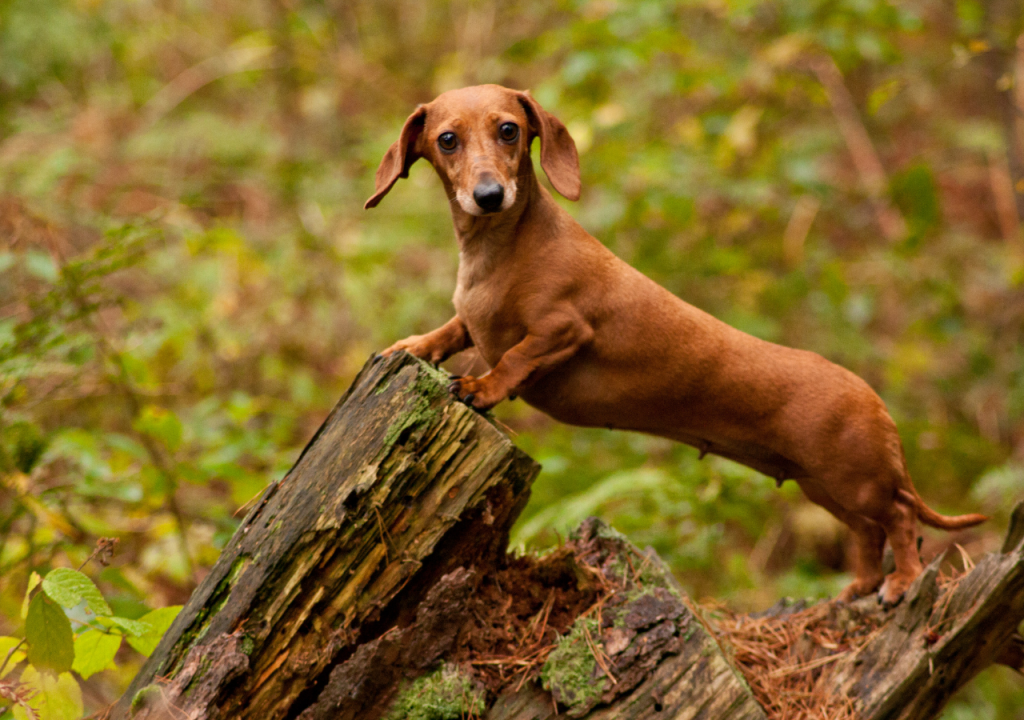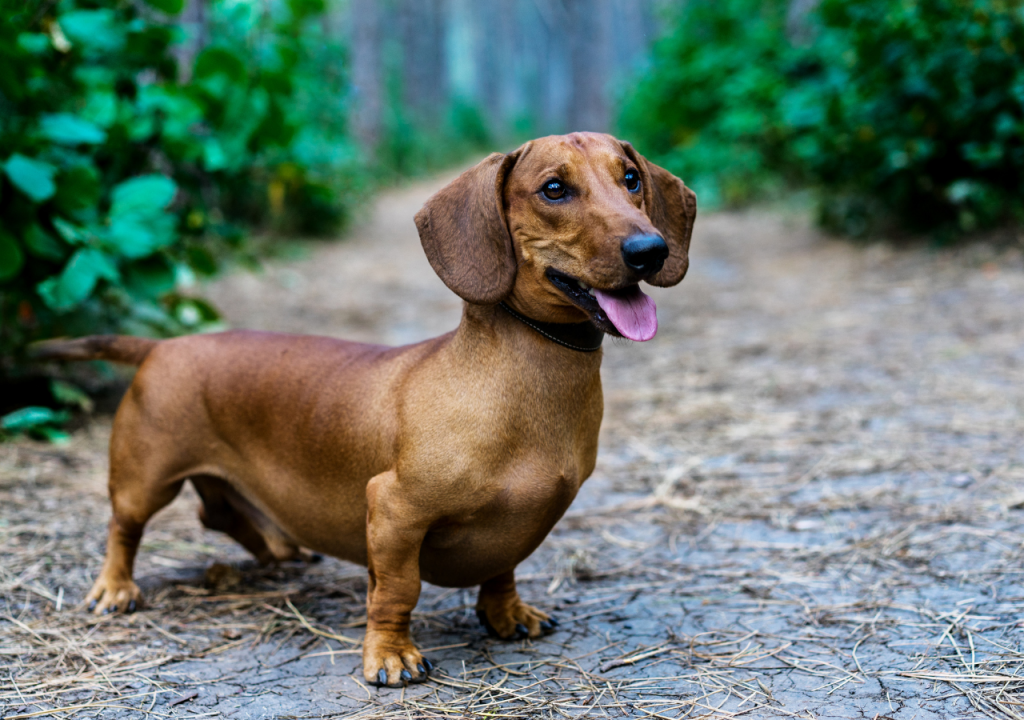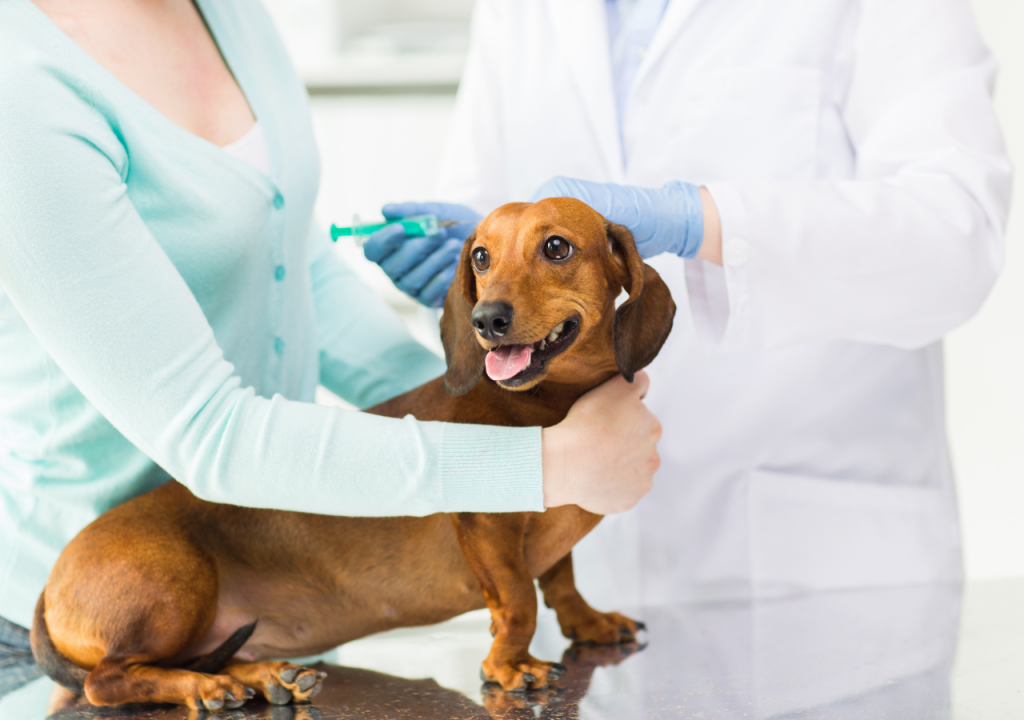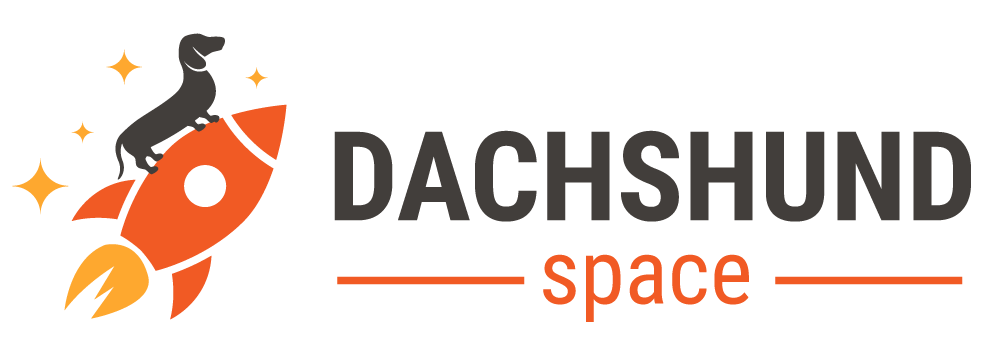When it comes to these adorable Sausage dogs, their short legs are the first feature we spot on them. However, those important body parts are often affected by certain health issues, and pes varus in Dachshunds is one of them.
Bow-leggedness, known in medical terms as pes varus, is a condition where a dog’s legs, particularly the hind legs, curve outward, giving a bow-legged dachshund appearance. This structural anomaly can be due to a variety of reasons, including genetic predispositions and nutritional deficiencies.

In Dachshunds, whose unique body structure puts additional stress on their legs, this condition can lead to discomfort and mobility issues. Understanding the mechanics behind bow-legged dachshund legs and recognizing the difference between a healthy sus Dachshund stance and one affected by pes varus is crucial for early intervention.
Causes of Pes Varus in Dachshunds
Pes Varus is a condition that can significantly affect the quality of life for Dachshunds. It causes the hind legs to bow outwards, and while it may seem merely cosmetic, it can lead to more serious health issues. Understanding the root causes is the first step to effective prevention and treatment.
Genetic Predisposition
In Dachshunds, the architecture of their short and stout legs can predispose them to leg deformities. This genetic inclination means that pes varus is often inherited. Breeders may sometimes inadvertently select for traits that enhance this predisposition, not realizing that they are also passing along the potential for bow-leggedness. When considering a Dachshund puppy, it’s essential to look into its lineage for any signs of leg deformities like pes varus, which can be a marker for bow-leggedness.
Nutritional Factors
Nutrition plays a pivotal role in the development and health of a Dachshund’s skeletal structure. Deficiencies in essential nutrients such as calcium, phosphorus, and vitamin D can lead to improper bone growth, potentially resulting in conditions like pes varus. Ensuring your Dachshund has a balanced diet, especially during their rapid growth phase as puppies, is crucial. This preventive measure is particularly significant for bow legged puppy back legs, where proper nutrition can support correct bone development.
Environmental Influences
The environment in which a Dachshund grows can also contribute to the development of bow-leggedness. Surfaces that are too hard or slippery can affect the way a puppy learns to walk, potentially leading to abnormal gait patterns and stress on their legs. Additionally, an overly strenuous exercise regimen for a young Dachshund whose bones and joints are still developing can lead to stress injuries, causing the legs to heal improperly and result in a bow-legged appearance.

Injury and Trauma
Traumatic injuries to the legs, particularly during the formative puppy years, can lead to bow-leggedness. A fracture that heals incorrectly or an injury to the growth plate can alter the natural growth pattern of the leg bones, leading to a bow-legged stance. It’s critical for owners to monitor their playful Dachshunds and protect them from high-impact activities that can cause such injuries.
Comparison with Human Conditions
While pes varus is predominantly a canine condition, it shares similarities with certain orthopedic conditions in humans. This cross-species comparison can be helpful in understanding the condition and its treatments, as veterinary orthopedics can sometimes adapt successful human treatments to animals.
Early Detection and Diagnosis
Early detection of bow-leggedness is key to effective treatment. Symptoms can range from a noticeable curvature in the dog’s hind legs, often described as dog bow-legged hind legs or dogs back legs bowed out, to more subtle signs like changes in gait or reluctance to exercise. Veterinarians can diagnose this condition through a combination of physical examinations and imaging techniques. Understanding the early signs, such as the appearance of bow-legged puppy back legs, allows for timely intervention, improving the prognosis for affected Dachshunds.
Treatment Options for Pes Varus in Dachshunds
When addressing pes varus in Dachshunds, such as dog bow-legged hind legs or bow legged dog back legs, it’s crucial to consider a range of treatments tailored to the severity and underlying cause of the condition. Here’s a comprehensive list of potential treatments:
Orthopedic Bracing and Supports:
Custom-designed braces can help to realign the legs by providing support to the affected limbs. These are particularly beneficial for dog bow legged hind legs where the deformity is mild to moderate and can also be used as a post-operative support mechanism.
Physical Therapy and Rehabilitation:
A structured rehabilitation program can strengthen the muscles around the dog’s back legs and improve overall joint health. This can be an effective treatment for dogs back legs bowed out, helping to reduce the bowing over time.
Corrective Surgery:
In more severe cases of bow legs in dogs, especially when the condition is causing significant pain or mobility issues, surgery may be recommended. Procedures can range from osteotomies (cutting and realigning bones) to arthrodesis (joint fusion).
Pain Management:
Non-steroidal anti-inflammatory drugs (NSAIDs) may be prescribed to manage pain and inflammation associated with bow-legged dog back legs.

Weight Management:
For Doxies with pes varus, managing weight can reduce the strain on the legs and joints, thus minimizing the progression of the condition. In case
Nutritional Support:
A balanced diet rich in omega-3 fatty acids, glucosamine, and chondroitin may help support joint health in bow legged puppy back legs.
Exercise Modification:
Limiting high-impact activities can be beneficial for a weiner dog with bow-leggedness. Instead, activities like swimming can provide good exercise for your Dachshund without excessive strain on the legs.
Alternative Therapies:
Acupuncture and hydrotherapy have been known to help some dogs with mobility issues, potentially offering relief for bow-legged dog treatment. It can also help Dachshunds who can’t climb stairs.
Chondroprotective Agents:
Supplements that support cartilage development and repair, such as polysulfated glycosaminoglycans, can be part of a treatment regimen for bow-legged dog treatment.
Regular Veterinary Check-ups:
Ongoing assessment by a veterinarian is crucial, especially for sus dachshund, to monitor the condition and adjust treatment as necessary.

Behavioral Modification:
Training to encourage low-impact movements and discourage behaviors that might exacerbate the condition in varus vs valgus dog.
3D Printed Orthotics:
Emerging technologies such as 3D printing can be used to create custom-fitted orthotics for dogs, providing support precisely where it’s needed.
Surgical Implants and Prosthetics:
For more advanced cases, surgical implants or prosthetics might be considered to correct or compensate for the deformity.
Genetic Counseling:
In cases where there’s a hereditary component, breeders may seek genetic counseling to understand the risks and minimize the chance of passing on the traits responsible for varus miniatures or bow-leggedness.
Lifestyle and Management Tips of a pes varus in Dachshunds
Managing a pes varus in Dachshunds involves more than just medical treatment. Lifestyle adjustments can significantly improve the quality of life for dogs with this condition. Regular, gentle exercise can help maintain muscle strength without putting excessive stress on the legs. Nutritional support, including a balanced diet rich in calcium and phosphorus, can support bone health. Additionally, creating a comfortable living environment that minimizes the need for your Dachshund to navigate stairs or jump on high surfaces can prevent further strain on their legs.
How can I tell if my Dachshund’s legs are normally short or abnormally bowed?
Distinguishing between the naturally short legs of a Dachshund and abnormally bowed legs, such as those caused by conditions like pes varus or other leg deformities, requires careful observation and understanding of canine anatomy. Dachshunds are known for their distinctive short legs and long bodies. It’s a trait that is part of their breed standard. However, when these legs appear more bowed than usual, it could indicate a health issue that may need attention.
Observing Your Dachshund’s Stance and Gait
The first step in determining whether your Dachshund’s legs are normally short or abnormally bowed is to observe their stance and gait. A healthy Dachshund with typical leg structure will have a confident, balanced stance and a smooth gait, despite the shortness of their legs. In contrast, a Dachshund with bow-legged hind legs, such as those affected by pes varus, will display a noticeable curvature in the legs. They’ll be especially visible when viewed from the front or back. This curvature can make their walk or run appear awkward or strained.
Looking for Signs of Discomfort or Difficulty
Another indicator of abnormally bowed legs is the presence of discomfort or difficulty in movement. If your Dachshund shows reluctance to engage in regular activities like walking, jumping, or playing. They can exhibit signs of pain such as whimpering or licking their legs. This could suggest an issue beyond their naturally short stature.
Comparing Symmetry
Symmetry in your Dachshund’s legs can also provide clues. Naturally short legs will be symmetrical, with both sides of the body mirroring each other closely. In cases of bow-leggedness, you might notice asymmetry, with one or both legs curving outward more than what seems natural.
Veterinary Evaluation
The most definitive way to determine if your Dachshund’s legs are abnormally bowed is through a veterinary evaluation. A veterinarian can conduct physical examinations and possibly recommend imaging tests like X-rays to assess the bone structure of your Dachshund’s legs. Conditions like pes varus, varus deformity in dogs, or other related issues like valgus deformity can be diagnosed through these assessments.
Familiarity with Breed Standards
Familiarizing yourself with Dachshund breed standards can also be helpful. Understanding the typical physical characteristics and leg structure of Dachshunds can provide a baseline for identifying deviations that might indicate a problem like pes varus or bow-leggedness.
Pes Varus in Dachshunds: Wrapping up
If you suspect that your Doxie suffers from pes varus, professional treatment is inevitable. Since this condition can severely affect your dog’s quality of life, you need to react quickly. Take your pet to the vet and ask for possible treatment options The earlier you treat it, the chances for a success will be higher!


